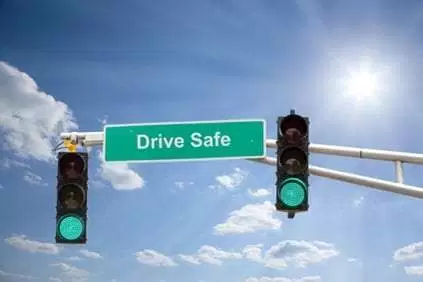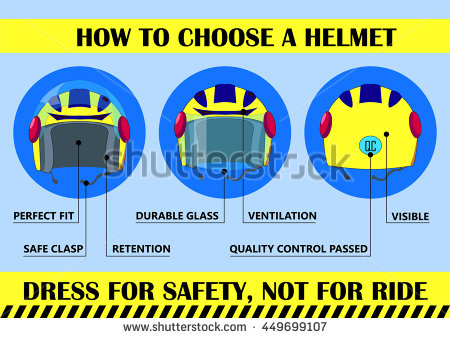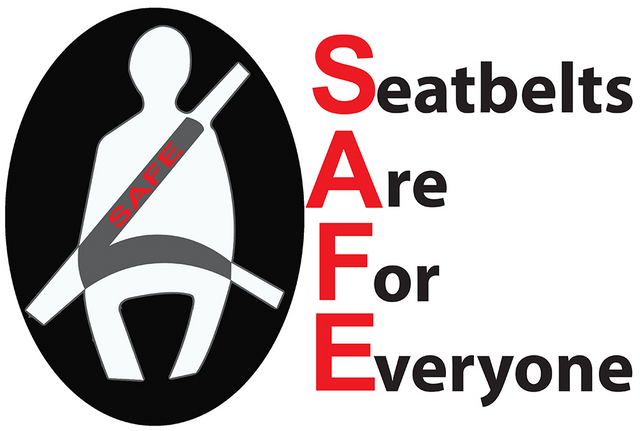Safety Reminders: 10 Facts on Global Road Safety

This past days I witnessed a horrible accident in the Subway where mass casualty incident level 2 as indicated by the report. The multiple vehicle collision pile up with 9 vehicles inside tunnel of coastal road and 11 patients with 3 critical. The ERUF, ambulances, Fire Truck and policemen were rushed going to the SRP Tunnel North Bound lane.
Due to my curiosity, this blog are all about the Statistics of Death Accidents in the world based from the statistics number from the reliable agencies and the 10 facts of road global safety.
Based on the World Health Organization (WHO) about 1.3 million people die each year on the world's roads and between 20 and 50 million sustain non-fatal injuries. Road traffic crashes are a major cause of death among all age groups and the leading cause of death among those aged 15–29 years.
-Men cause 6.1 million accidents per year and women cause 4.4 million per year
-105.7 million women and 104.3 million men have drivers licenses
-On average, men drive 16,550 miles and women drive 10,142 miles per year
So men account for roughly 1.73^12 miles driven per year, while women drive a combined total of 1.07^12 miles per year.
That means men drive about 30 percent more miles than women. Yet, they’re implicated in slightly less than 30 percent of car accidents. Men do cause more accidents, but they are actually less at-risk than women, by a small margin.**
Here are 10 Facts on Road Global Safety:

This fact file presents data from WHO's most recent Global health estimates and the Global status report on road safety, published in 2015. The reports show that road traffic injuries remain an important public health problem. To reduce the number of road traffic deaths and injuries, a holistic framework such as the Safe System approach needs to be adopted to ensure a safe transport system for all road users.
Fact 1: Road traffic injuries are a global public health problem
Every year, there are approximately 1.3 million road traffic deaths worldwide. 93% of these road traffic deaths occur in low- and middle-income countries which only have 54% of the world’s registered vehicles.
And if present trends continue, road traffic injuries are predicted to be the third-leading contributor to the global burden of disease and injury by 2020.
Fact 2: Vulnerable road users account for half of all road traffic deaths globally
Pedestrians, cyclists, and riders of motorized 2- and 3-wheelers and their passengers are collectively known as "vulnerable road users" and account for half of all road traffic deaths around the world. A higher proportion of vulnerable road users die in low-income countries than in high-income countries.
Fact 3: Controlling speed reduces road traffic injuries

As average speed increases, so too does the likelihood of having a road traffic crash and the severity of the consequences should a crash occur. An increase of 1 km/h in mean vehicle speed results in an increase of 3% in the incidence of crashes resulting in injury and an increase of 4–5% in the incidence of fatal crashes.Enforcing blood alcohol limits is another opportunity to improve road safety. While it is commonly understood in developed countries that impaired driving is an important contributor to road traffic fatalities and injuries, little is known in these countries about the nature and scope of the problem. One survey of studies found that, in developing countries, blood alcohol was present in 33 percent to 69 percent of fatally injured drivers.Only 47 countries, representing 13% of the world’s population, have laws that meet best practice on urban speed. This means having a national urban maximum speed limit of no more than 50 km/h and allowing local authorities to modify this limit when necessary, to ensure safe speeds locally.
Because blood alcohol tolerances vary across countries, comparison studies are difficult, and to date, no study has provided the evidence to benchmark the tolerance level at which reductions in accidents can occur in developing countries. David Bishai, an injury prevention expert and associate professor at Johns Hopkins University 's Department of Population and Family Health Sciences, suggests that taxing gasoline and alcohol could lower traffic deaths by causing less driving and less drunk driving in developing countries. But he warns that other measures must be taken and must fit the needs of the local environment.
Fact 4: Drinking alcohol and driving increases the risk of a crash

Drinking and driving increases the risk of a crash dramatically above a blood-alcohol concentration (BAC) of 0.05 g/dl. WHO recommends a BAC of ≤0.05 g/dl for the general driving population, and a limit of ≤ 0.02 g/dl for young and novice drivers. Only 34 countries, representing 29% of the world’s population, have national drink–driving laws that meet best practice.Because blood alcohol tolerances vary across countries, comparison studies are difficult, and to date, no study has provided the evidence to benchmark the tolerance level at which reductions in accidents can occur in developing countries. David Bishai, an injury prevention expert and associate professor at Johns Hopkins University 's Department of Population and Family Health Sciences, suggests that taxing gasoline and alcohol could lower traffic deaths by causing less driving and less drunk driving in developing countries. But he warns that other measures must be taken and must fit the needs of the local environment.
Fact 5: Wearing a good-quality helmet can reduce the risk of death from a road traffic crash

Wearing a good-quality helmet can reduce the risk of death by 40% and severe injury by approximately 70%. Only 44 countries, representing 17% of the world’s population, have motorcycle helmet laws that meet best practice: this means making sure the law applies to all drivers and passengers, all roads and engine types, requires the helmet to be fastened and makes reference to a particular helmet standard.Finally, although mandatory seat-belt-use laws have reduced traffic injuries in developed countries by 40 percent to 50 percent, such laws must be tailored to the local situation: In developing countries, car occupants constitute less than 10 percent to 20 percent of traffic fatalities.18 These countries also need to improve helmet safety and use among two- and three-wheel vehicle operators as well as to enforce the appropriate number of passengers for these vehicles.
Fact 6: Wearing a seat-belt reduces the risk of death among front-seat and rear-seat passengers

Wearing a seat-belt can reduce fatal and non-fatal injuries among front seat occupants by 45-50% and rear-seat car occupants by 25–75%. 105 countries, representing 67% of the world’s population, have seat-belt laws that cover both front and rear seat occupants, in line with best practice.
Fact 7: The use of appropriate child restraints considerably reduces the risk of serious injury to children
Placing children in child restraints reduces the risk of serious injury by up to 80% compared to children restrained only by seat-belts. Further, children in booster seats have a 77% reduced risk of being injured in a crash compared to unrestrained children. Only 53 countries, representing 17% of the world’s population, have a child restraint law that meets best practice. Best practice laws apply restrictions on children sitting in the front seat, and require that the restraints children use are appropriate for their age/height/weight.
Fact 8: Access to timely and effective emergency care after road traffic crashes saves lives and reduces disability among the injured
Key solutions for emergency care system development include establishing universal access numbers linked to integrated prehospital and facility-based emergency care services, training all frontline providers in basic emergency care, and promoting lay first responder training where formal systems are limited.
Fact 9: Vehicles sold in 80% of all countries worldwide fail to meet basic safety standards
The safety of vehicles plays a critical role both in averting crashes and reducing the likelihood of serious injury in the event of a crash. The United Nations World Forum for Harmonization of Vehicle Regulations is the primary global body responsible for the development of international motor vehicle standards. Among the most important vehicle safety standards promoted through the World Forum are 7 key regulations that help ensure safe vehicles. However, to date only 40 countries have adopted all 7 regulations, and 35 of these are high-income countries.
Fact 10: Unsafe road infrastructure increases the risk of a crash
The design of roads can have a considerable impact on their safety. Roads should be designed keeping in mind the safety of all road users. This would mean making sure that there are adequate facilities for pedestrians, cyclists, and motorcyclists. Measures such as footpaths, cycling lanes, safe crossing points, and other traffic calming measures are critical to reducing the risk of injury among these road users.
We all find ourselves in situations that at times seem hopeless. And, we all have the choice to do nothing or take action. Your actions could save lives, so don’t be a bystander when it comes to safety.
Sources:
http://www.prb.org/Publications/Articles/2006/RoadTrafficAccidentsIncreaseDramaticallyWorldwide.aspx
http://www.who.int/features/factfiles/roadsafety/en/
(National Highway Safety Administration).
( Federal Highway Administration)
University of Michigan’s Transportation Research Institute
thank you for this post, its really important! SAFETY always comes first! Everyday thousands of people dying in accidents. its so sad :(
It is reminder to everyone about safety. Based on the statistics every year is rapidly increasing.
thanks alot again! you're so thoughtful!
of course your new here I guess?
yes jonnah, its been only two days, glad to be here :) i followed you now, see you again! I also voted for you now! You deserve it!
I am glad to know that. Keep steem.
hmm deep word, safety first is safety always.... i will never forget that
The World is Yours
please apply it on your daily life.
@originalworks
The @OriginalWorks bot has upvoted and checked this post!
Some similarity seems to be present here:
http://www.who.int/features/factfiles/roadsafety/en/
It appears the author has cited this source in their work. Great Job!
This post has received gratitude of 0.55 % from @appreciator thanks to: @jonnahmatias1016.